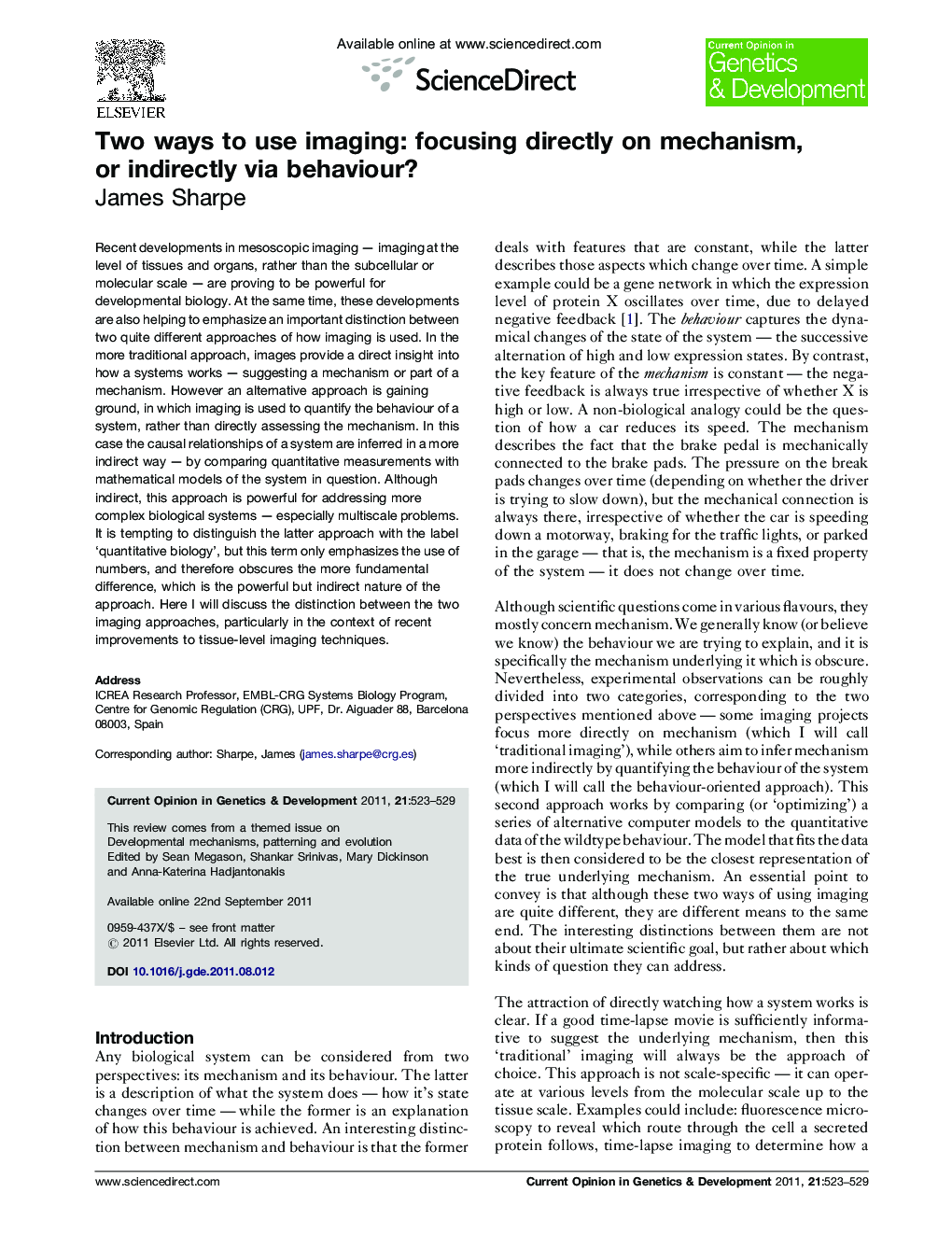| کد مقاله | کد نشریه | سال انتشار | مقاله انگلیسی | نسخه تمام متن |
|---|---|---|---|---|
| 5893759 | 1153923 | 2011 | 7 صفحه PDF | دانلود رایگان |

Recent developments in mesoscopic imaging - imaging at the level of tissues and organs, rather than the subcellular or molecular scale - are proving to be powerful for developmental biology. At the same time, these developments are also helping to emphasize an important distinction between two quite different approaches of how imaging is used. In the more traditional approach, images provide a direct insight into how a systems works - suggesting a mechanism or part of a mechanism. However an alternative approach is gaining ground, in which imaging is used to quantify the behaviour of a system, rather than directly assessing the mechanism. In this case the causal relationships of a system are inferred in a more indirect way - by comparing quantitative measurements with mathematical models of the system in question. Although indirect, this approach is powerful for addressing more complex biological systems - especially multiscale problems. It is tempting to distinguish the latter approach with the label 'quantitative biology', but this term only emphasizes the use of numbers, and therefore obscures the more fundamental difference, which is the powerful but indirect nature of the approach. Here I will discuss the distinction between the two imaging approaches, particularly in the context of recent improvements to tissue-level imaging techniques.
⺠Traditional imaging often aims to analyse perturbations, or to perform phenotyping. ⺠For certain questions this can provide a direct impression of underlying mechanisms. ⺠More complex multiscale problems must often be tackled using an indirect approach. ⺠Tissue-level imaging is ideal for capturing the behaviour of such systems. ⺠It is thus well-suited for this indirect computational modeling approach.
Journal: Current Opinion in Genetics & Development - Volume 21, Issue 5, October 2011, Pages 523-529